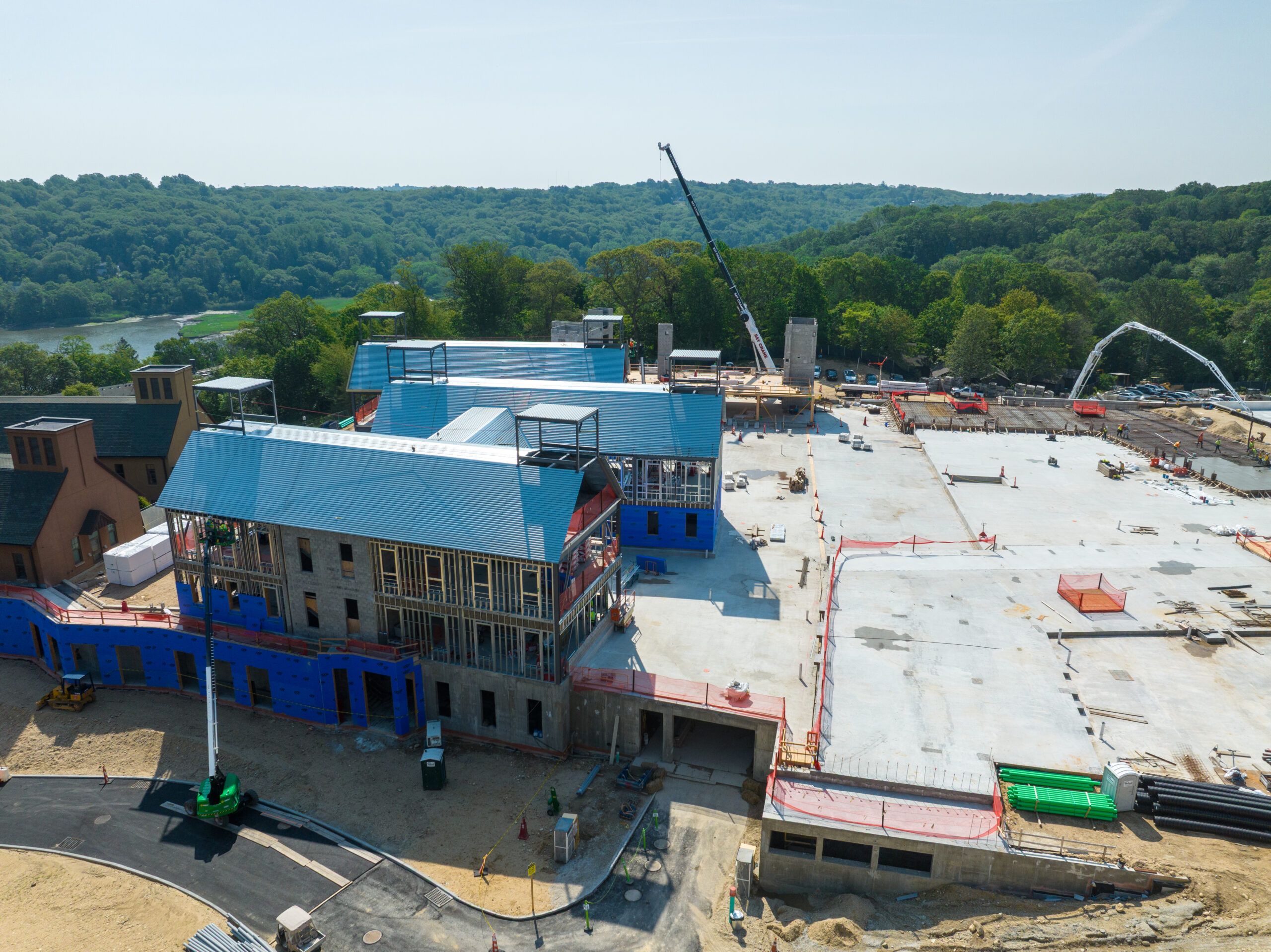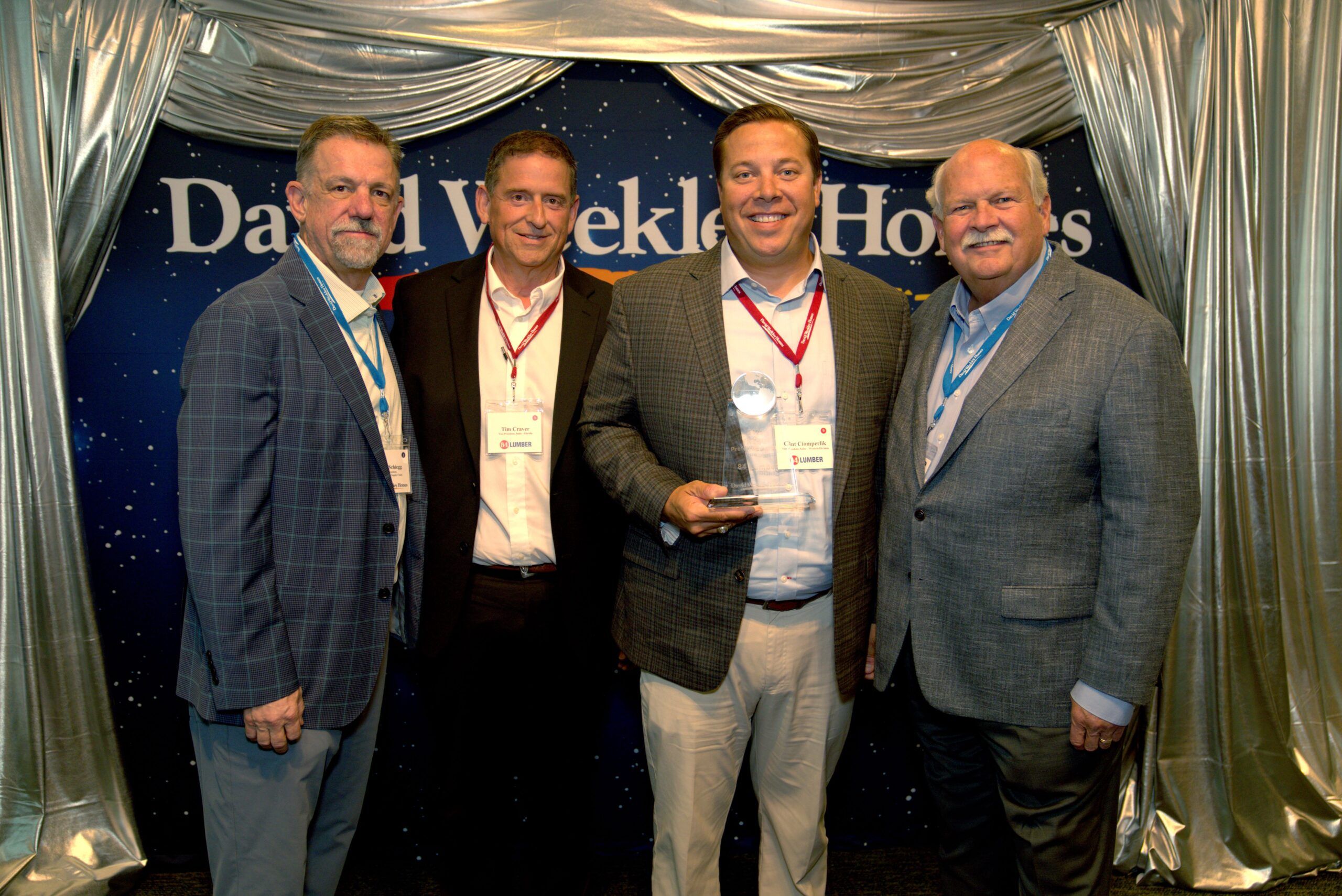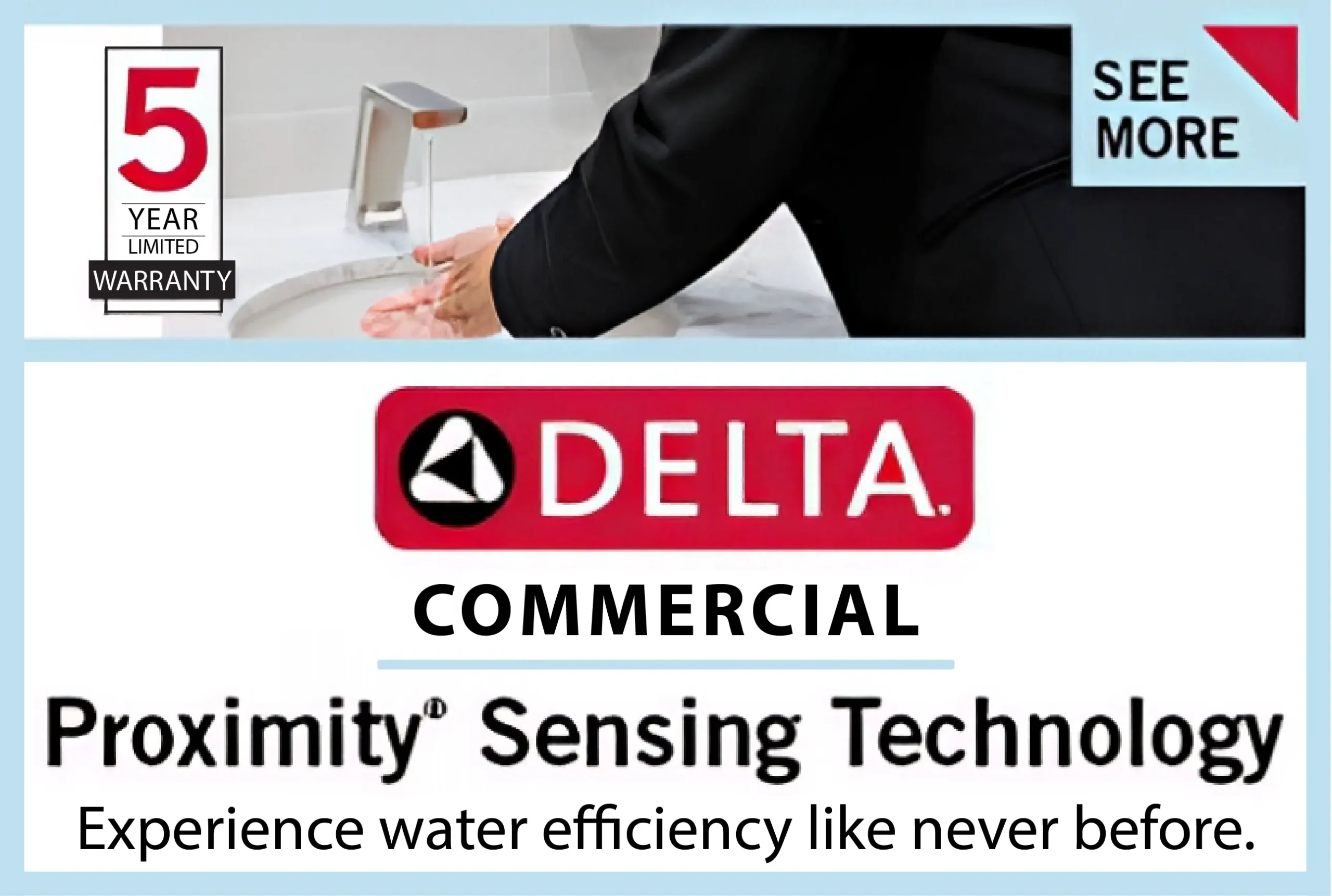Modern cities are filled with tall buildings and impressive structures, all of which need to stay clean and safe. Keeping the outside of these buildings in good condition is a tough job. Older cleaning methods often use heavy scaffolding or big machines that can disrupt daily life in and around the building.
This is where rope access companies step in. These experts use unique skills and methods to tackle cleaning and maintenance jobs in high or hard-to-reach places, making the process smoother and less intrusive. By applying climbing and caving methods, rope access companies offer a flexible, quick, and often cheaper solution. They move easily around a building’s unique shapes, cleaning windows, facades, and even detailed atriums without stopping the building from running as normal.
Their work combines physical skill, thorough training, and strict safety rules, which is why they have become so important for maintaining modern buildings today.
What Are Rope Access Companies and How Do They Work?
A rope access company uses ropes and special equipment to reach high or tricky spots that would be hard or impossible to get to with normal access tools. These aren’t casual climbers; they are highly trained experts who follow strict global safety rules.
Their job is to not only get to difficult spots but to carry out tasks like cleaning, fixing, or checking building parts while safely hanging on ropes.
What Is Rope Access Technology?
Rope access, also known as industrial climbing, uses ropes, harnesses, and equipment designed for climbing and rigging to get to places that scaffolding or cranes can’t. It originally came from the climbing and caving world, but it has been adapted for building and industrial needs. The system lets workers move up, down, and sideways to reach any spot they need.
The setup always includes two ropes for extra safety. One rope is for support, letting the worker move around, while the other is a backup if the first fails. The gear, including descenders, ascenders, and anchors, is checked all the time to make sure the technician is always safe and secure.
How Do Rope Access Workers Clean Commercial Spaces?
These workers set up strong anchor points at the top of the building. They then go down the side of the building on their ropes, taking whatever cleaning tools they need. Their tools can include squeegees, brushes, pressure washers, or industrial vacuums for dirt and dust.
Because they can move so freely, they can clean hard-to-reach corners and oddly shaped parts of buildings that are tough using other methods. They usually work in teams, keep in touch, and follow strict safety rules on every job. This way, they can clean even the most complicated areas well and help keep the building’s looks and materials in good condition.
What Training and Certificates Do Rope Access Experts Need?
Safety comes first in rope access work, which is why those in the field go through tough training and must earn special certificates. Groups like the International Rope Access Trade Association (IRATA) and the Society of Professional Rope Access Technicians (SPRAT) set rules for the industry. Workers progress through levels, learning basic rope work first and moving up to tasks like rigging ropes or leading teams.
Training covers using ropes, checking and caring for equipment, spotting risks, securing positions, and handling emergencies. Getting a certificate requires both written and hands-on tests. Workers need to renew their certificates regularly to keep their skills up to date. Only those with the right training and certificates can do these jobs, which keeps safety levels high.
How Is Rope Access Cleaning Different From Traditional Methods?
When you compare rope access to older approaches like scaffolding or lifts, the differences are clear. While bigger projects like major repairs might still need scaffolding, rope access stands out for its versatility, quick setup, and the fact that it almost never interrupts building use. This makes it great for everyday cleaning and maintenance tasks on today’s commercial buildings.
Main Differences in Equipment and Setup
Scaffolding takes a lot of time and people have to put it up and take it down. It needs heavy pipes and boards, and often blocks off parts of the building, making entryways or sidewalks hard to use. Cradles or building maintenance units may be installed permanently, but they can’t reach every surface, especially on buildings with creative designs.
Rope access, though, uses small, easy-to-carry gear like ropes, harnesses, and anchors. It can be set up in just a few hours, not days or weeks. There’s little clutter or blockage at ground level, so work can begin sooner and cause less trouble for everyone around.
Comparing Access Challenges: Ropes vs. Scaffolding and Cradles
Complex building shapes can make scaffolding impractical or impossible to use. Buildings with sloped or curved sides, overhangs, or recessed sections can’t always be reached with platforms or cradles. These systems also often can’t move side-to-side easily.
Rope access avoids these problems. Technicians can move around obstacles, reach tight corners, and work on almost any part of a building, whatever its shape or size. This is why rope access is especially useful for modern buildings with unique facades and glass walls.
Average Time for Rope Access vs. Standard Cleaning Methods
Rope access is much faster than traditional methods. With rope access, setup is quick and work can often start the same day. This is especially helpful for smaller jobs or in buildings that need cleaning often.
Old methods that need scaffolding or large machines waste a lot of time setting up and taking down gear. A big scaffold could take weeks just to build and remove, while rope access could get the same cleaning job done much quicker, saving time and money.
What Are the Benefits of Rope Access Companies for Commercial Cleaning?
Rope access isn’t just about getting to tough spots. It brings a full set of advantages, making it attractive to building owners and managers. It helps save money, works quickly, is safer, and is better for the environment.
Cost Savings for Building Owners and Contractors
One of the biggest benefits is lower costs. Traditional tools mean paying for scaffold rental, transport, and a big crew for setup. Permits may be needed to close parts of the street or block sidewalks, which also adds to the price.
Rope access cuts these costs. The gear is lighter and takes less manpower. Faster setup means fewer work hours. There are usually fewer rules and permits to worry about too since it rarely blocks public spaces, making things move faster and cost less overall.
Better Flexibility and Reach for Tough Spots
Rope access lets cleaners get to nearly any part of a building, from strange roof shapes to areas with small space on the ground. This means no part of a building has to be left dirty or in poor repair.
Whether it’s the inside of a tall atrium, the bottom of a building overhang, or windows on a building with complicated shapes, rope access makes these areas reachable and enables a thorough job to keep the whole building in top condition.
Less Disturbance for People Who Use the Building
Scaffolding can block light and views, get in people’s way, and can be loud or unsightly. Big machines on site may add to the disruption and inconvenience.
With rope access, things are neater and quicker. There are fewer ground-level obstacles and less noise. Daily work can go on inside the building with little to no disturbance for tenants, businesses, or guests.
Strong Safety Practices and Fewer Accidents
Contrary to what some people think, rope access is one of the safest ways to work at heights – if the workers are properly trained and certified. This is because the industry has high standards, focuses on safety, and insists on good habits and planning.
The system always includes at least two ropes, solid anchors, and regular checks of all gear. Workers are trained on both what can go wrong and what to do if it does. With international certificates and strict rules, rope access has a lower rate of accidents than other height work methods.
Smaller Environmental Impact
Rope access is better for the environment, as it uses less energy and resources. There is no need for heavy equipment that runs on fuel or for building materials like for scaffolding. The lighter setup means less noise, vibration, and disruption to the area around the building, which is important in busy or sensitive places.
Is Rope Access Cleaning Safe?
Safety is a key concern for any job done at height. While it might seem risky to see someone on ropes outside a tall building, rope access is built on solid safety practices and strict international rules.
Following International Safety Rules
Rope access safety is managed by groups like IRATA and SPRAT. They create detailed guidelines about how technicians should train, what equipment they can use, and how jobs are planned and carried out. Member companies and certified workers must follow these rules closely.
These guidelines require two-rope systems, careful risk checks before starting, and properly trained rescue backup on site. Sticking to these plans brings the risk of accidents down a lot, making every job as safe as possible.
Regular Equipment Checks
Before every use, workers check ropes, harnesses, and all hardware to catch any signs of damage or wear. Equipment is also reviewed in depth at regular intervals by qualified people.
If any gear is found to be unsafe, it is immediately taken out of use. Using quality, well-maintained equipment is key to keeping workers safe on every job.
Accident Rates Compared to Other Methods
Statistics show rope access has fewer accidents than other height access methods such as scaffolding or powered lifts. This is proof of the industry’s focus on safety and of how well the standards work. While there’s always some risk, rope access methods help keep these risks low, helping building owners worry less about accidents on their property.
Where Is Rope Access Used in Commercial Cleaning?
Rope access can handle a range of cleaning tasks, especially where traditional tools struggle. It allows for thorough cleaning and care in lots of different places and is often the only way to do the job without huge costs or trouble.
Cleaning High-Rise Facades and Windows
This is likely the most well-known use of rope access. Workers can clean windows and outside walls with ease, even on the tallest buildings. They can move up, down, and side-to-side, so every section gets the attention it needs. Cleaning regularly keeps the building looking impressive and may even help the materials last longer by removing harmful dirt and pollution.
Cleaning Atriums, Skylights, and Canopies
Many commercial spaces have glass ceilings, large open atriums, or detailed canopies that are difficult to clean with ladders or lifts. Rope access is perfect for getting to these spots, and workers can drop in from above if there’s a safe anchor. Clean glass and frames help with natural light and make indoor spaces more comfortable.
Clearing Rooftops and Building Edges of Debris
Leaves, trash, and bird nests can build up on rooftops or outside ledges. Rope access lets cleaners reach these places safely and remove debris, protecting against water damage or pest issues. This regular maintenance stops bigger and more expensive problems in the future.
Special Cleaning for Industrial and Unusual Structures
Factories, power plants, bridges, and towers can be tough to clean because of their design. Rope access lets workers get to inside or outside surfaces and handle dirt, dust, and residue. These cleaning jobs can help the structure work better, be safer, and meet rules set by inspectors.
What Should Building Owners Check Before Hiring a Rope Access Company?
Picking the right rope access company is important to get safe, good results. Not all companies are the same, so you need to look into their background before making a choice.
Main Points for Choosing a Vendor
Choose companies with a strong record in safety and recognized certifications like IRATA or SPRAT. Ask about their experience working on similar buildings, and see how long they’ve been in business. Make sure their equipment is good quality and regularly checked. Always ask to see proof of insurance and look up past customer reviews for peace of mind.
Questions to Ask Before Hiring
Have a list of questions ready before agreeing to a deal. Key things include what their safety plan is, how they check and keep up their gear, and what emergency steps they have in place. Ask for details about the workers’ certificates and how often they refresh them.
Clarify what exactly will be done, how long it will take, how they plan to avoid getting in the way of the building’s users, and how they handle waste afterward.
Common Myths About Rope Access Cleaning
Some people mistakenly think rope access is riskier than other options or only good for basic cleaning like windows. As explained here, rope access is actually very safe with the right training, and can handle a wide range of repair and inspection jobs.
Others think it’s a budget option that cuts corners, but the lower price is due to faster, more efficient work, not lower quality or safety. Certified workers consistently provide professional, safe, high-quality results.
How Are Rope Access Companies Shaping the Future of Commercial Cleaning?
Rope access isn’t just useful now – it’s set to become even more important as cities and buildings change. With its flexible approach and new technology, rope access will help meet cleaning and maintenance needs for future buildings.
Meeting New Building Design Challenges
As building shapes and features get more creative, older access methods won’t always keep up. Rope access remains the top choice for reaching new and complicated building designs, making sure these structures stay clean and in good shape no matter how unusual their shapes are.
Helping Maintain Greener, More Sustainable Buildings
Sustainability is now a major focus for both builders and managers. Since rope access uses less energy and causes less disruption, it fits well with green building standards and environmental goals. This makes it the preferred option for many looking to meet eco-friendly targets.
Technological Progress in Rope Access
Rope access methods and gear keep improving. Some companies now combine rope work with new tools, like using drones for hard-to-see inspections before workers get in place. New cleaning equipment that works well with rope setups is also being developed. These upgrades keep making rope access faster, safer, and able to handle even more tasks in the years ahead.











